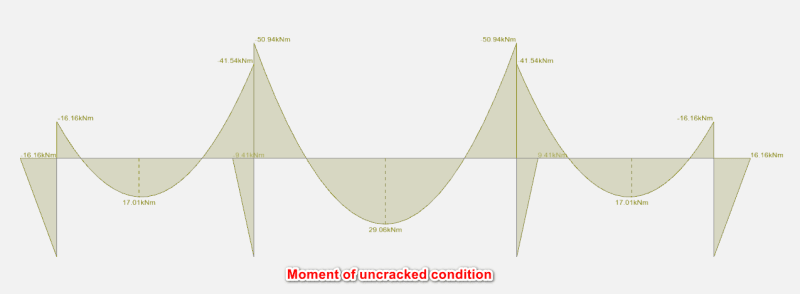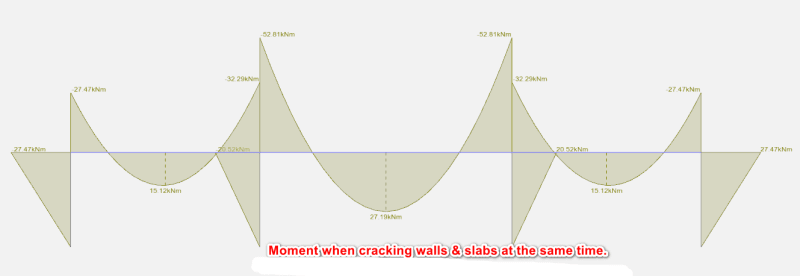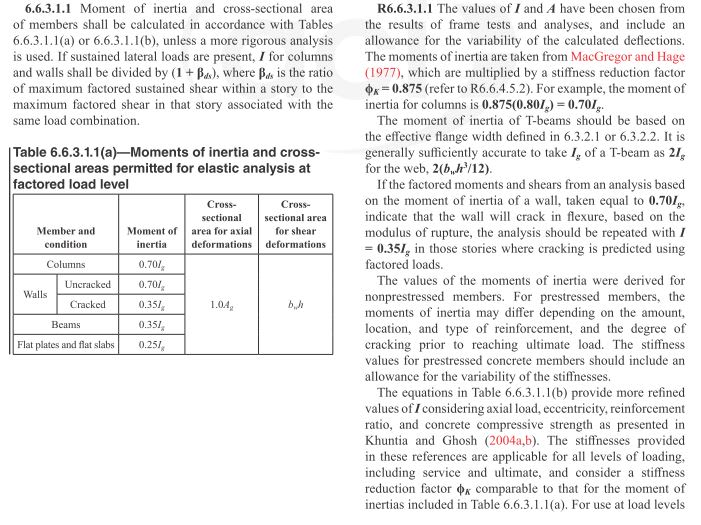7788_011
Structural
- Feb 7, 2022
- 24
Below is a section of the transfer structure I am working on. The transfer slab is going to be 400mm PT.
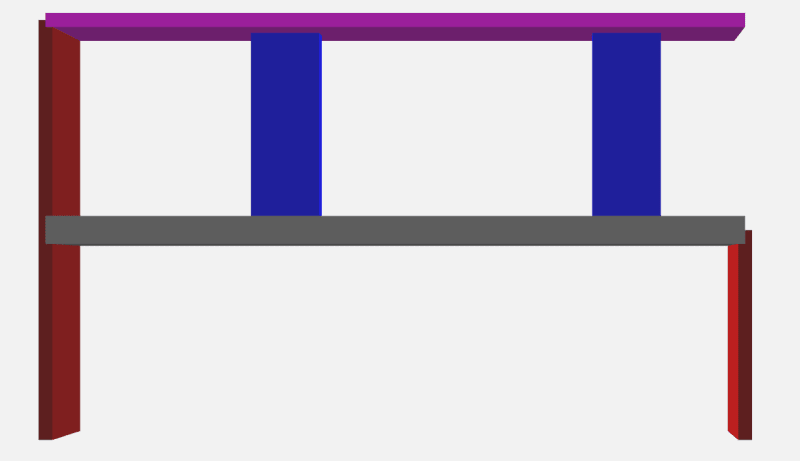
I am getting large moment at the bottom of internal transferring walls as you can see from the picture below.
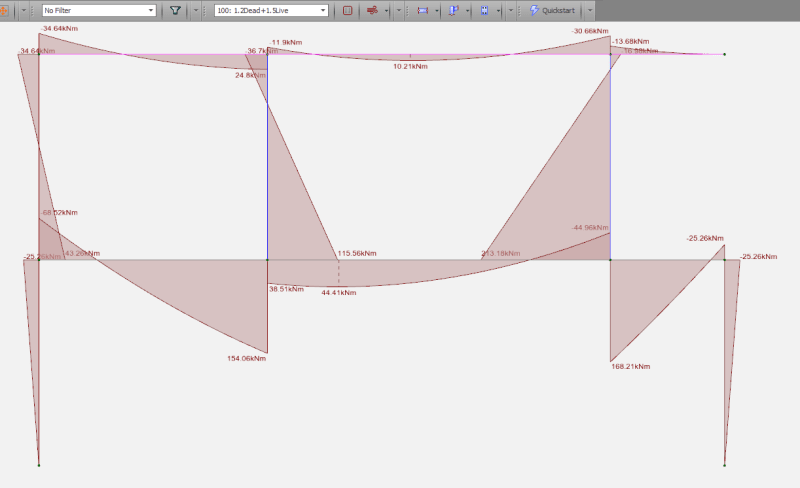
Above is a 2D model but I have created a full 3D model and considered the load construction sequence but still I am getting large bending moment under gravity, leading to heavily reinforced walls.
My question is, can I reduce the stiffness of these walls since these moments exceed their cracking moments?

I am getting large moment at the bottom of internal transferring walls as you can see from the picture below.

Above is a 2D model but I have created a full 3D model and considered the load construction sequence but still I am getting large bending moment under gravity, leading to heavily reinforced walls.
My question is, can I reduce the stiffness of these walls since these moments exceed their cracking moments?


